In any war reliable and accurate communication is essential. Battles are often won or lost on the ability to communicate information on enemy positions and movement, as well as instructions. The battlefields of the First World War were so big, widespread and difficult, that all sorts of methods of communication were used.
Wireless communication (radio) was only just being developed and although advances were made during the war, telephones, connected by wires, were the main technical means of contact in the trenches. Telephone lines were laid to connect the trenches with each other and with battle commanders, but the problem was that the wires were very often snapped or broken in the battles, leaving soldiers on the front line isolated and at great risk.
Other, more primitive but sometimes more reliable, means of communication were therefore used:
Pigeons
Homing pigeons will always return to their home loft, sometimes flying over 100 miles at speeds of over 50mph. In the war the army built lofts at the command bases and used the pigeons to carry messages back there from the trenches.
The pigeons were taken to the trenches from their lofts; a message was tied to the pigeon; the pigeon was released and it flew home at great speed. Whenever a pigeon returned, a bell would be triggered as it entered the loft and the message would be retrieved.
At the start of the war the British army had just 60 pigeons and 15 handlers. By 1918 there were more than 20,000 pigeons and 370 handlers.
Signalling
Flashing lamps, flags and whistles were some of the instruments used to signal from one trench to another but the problems with this method was that the enemy could work out the codes used and the flashing lights were sometimes seen by snipers and the signaller shot.
Runners
Soldiers were deployed as runners, one of the most dangerous jobs in the trenches, as they had to cross open ground, exposed to enemy sniper fire. Speed and fitness were key, and many runners were awarded medals for their bravery.
Dogs
Dogs were trained, like the pigeons, to return to their home station with messages fastened to them. They were sent out when it was too dangerous for the soldier runners. Faster and lower to the ground, they were less likely to be shot and could cover 10-15 miles in one to two hours.
Around 20,000 dogs served during the war. Until the War Dog School of Instruction was set up in 1917, the dogs were mostly family pets donated to the war effort, or strays recruited from dog pounds.

Leave A Comment